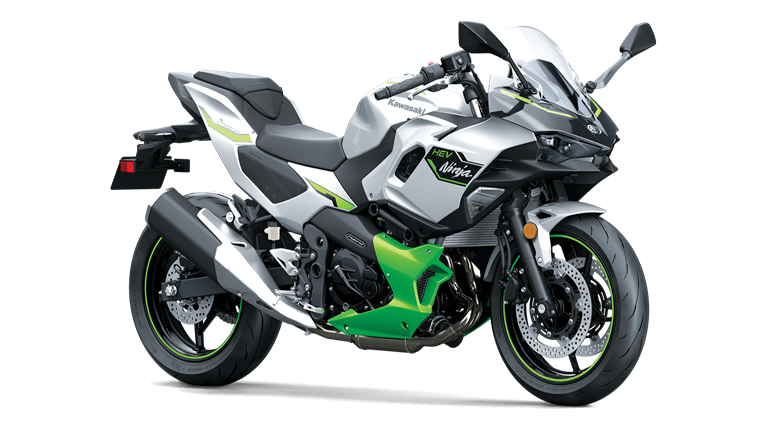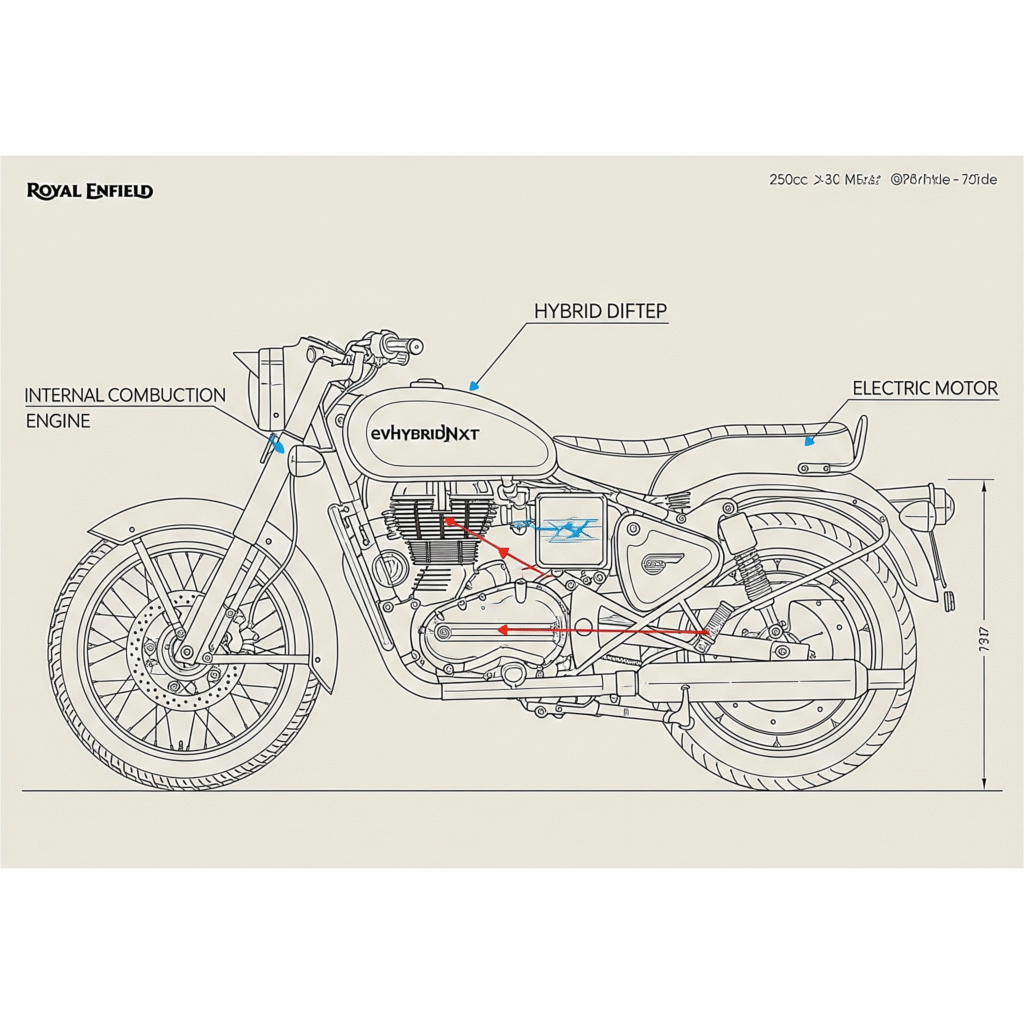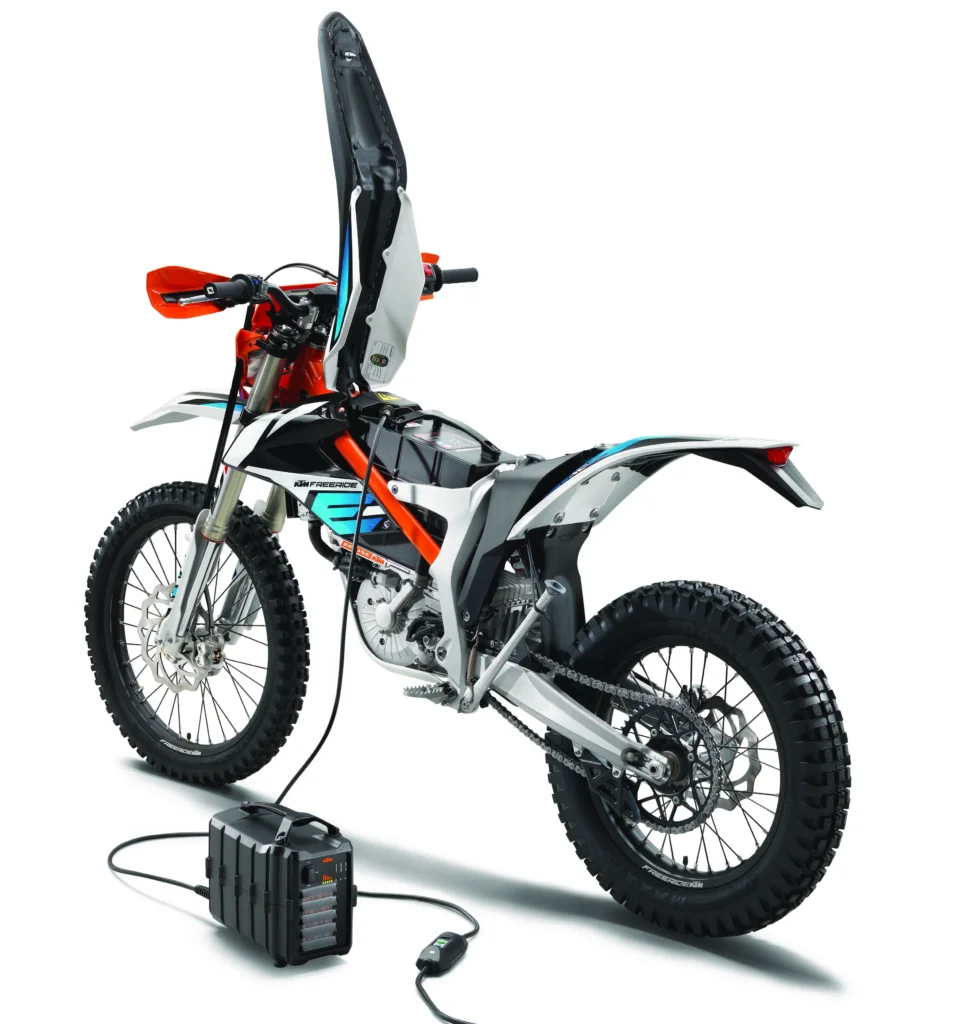Kawasaki has always been a trailblazer in the motorcycle world, known for its high-performance Ninjas and innovative engineering. But the latest offering, the Ninja 7 Hybrid, launched in 2025 as the world’s first¹ strong hybrid motorcycle, has sparked curiosity and frustration among Indian enthusiasts. This mid-size powerhouse combines a 451cc parallel-twin engine with an electric motor for instant acceleration rivaling a 1,000cc supersport, exceptional fuel economy akin to smaller-displacement bikes, and button-shift sport riding in three distinct drive modes. It ushers in a new era of riding experiences, blending e-boost for standing starts, eco-friendly efficiency, and tech-loaded features like traction control and customizable displays.
Yet, despite its game-changing potential, Kawasaki has no plans to bring the Ninja 7 Hybrid to India anytime soon. Adding salt to the wound, the bike is available in the USA at roughly half the price it would command in India if launched (based on equivalent models). In this article, we’ll explore the reasons behind Kawasaki’s decision to skip the Indian market and dissect the pricing disparity that makes the Ninja 7 Hybrid such a steal stateside.
Introducing the Kawasaki Ninja 7 Hybrid: A Hybrid Revolution on Two WheelsUnveiled at EICMA 2024 and hitting markets in early 2025, the Ninja 7 Hybrid is Kawasaki’s bold step into electrified mobility. At its core is a 451cc liquid-cooled parallel-twin petrol engine producing 51 PS (37.5 kW) at 10,000 rpm and 42.6 Nm at 6,000 rpm, paired with a 9 kW electric motor integrated into the transmission for seamless hybrid operation. The 0.69 kWh lithium-ion battery enables “strong hybrid” functionality, where the electric boost delivers up to 60 PS combined power for explosive launches – 0-100 km/h in under 5 seconds, comparable to superbikes.
Key highlights include:
- Drive Modes: Eco (for maximum efficiency, up to 35 km/l claimed), Road (balanced performance), and Sport (full hybrid punch with e-boost).
- Innovative Features: Button-shift quickshifter, cruise control, TFT display with smartphone connectivity via Rideology app, and regenerative braking that charges the battery on the go.
- Practicality: A lightweight 178 kg kerb weight, 15-liter fuel tank, and 690 mm seat height make it accessible for urban riders, while ABS and traction control ensure safety.
- Range and Efficiency: Over 300 km combined range (petrol + electric), with the hybrid system optimizing fuel use for city commuting.
Priced competitively in global markets, the Ninja 7 Hybrid starts at around ¥850,000 in Japan (approximately ₹4.5 lakh or $5,400 USD), positioning it as an affordable entry into premium hybrid tech. But why is this exciting bike absent from India, and why does it cost half as much in the USA compared to what an Indian buyer might expect?
Why Kawasaki Won’t Launch the Ninja 7 Hybrid in India
India’s motorcycle market is booming, with over 18 million units sold annually, and the premium segment (above 300cc) growing at 15% YoY. Kawasaki India already offers a strong lineup, including the Ninja 300, 650, ZX-10R, and Versys models, with a market share of about 2-3% in the performance category. So, why skip the Ninja 7 Hybrid? Several interconnected factors explain this decision, rooted in market dynamics, regulatory hurdles, and business strategy.
1. Market Demand and Segment Fit
India’s two-wheeler market is dominated by commuters and entry-level bikes under 200cc, accounting for 85% of sales. Premium motorcycles above 400cc represent just 1-2% of the volume, with brands like Royal Enfield, Triumph, and Kawasaki focusing on established models like the Classic 350 or Ninja 650. The hybrid tech in the Ninja 7 Hybrid, while innovative, targets a niche audience of eco-conscious urban riders who want sporty performance without the high running costs of pure petrol superbikes.However, Indian buyers in this segment prioritize affordability and reliability over cutting-edge hybrids. Electric two-wheelers (like Ather or Ola scooters) are gaining traction due to subsidies and low operating costs, but hybrid motorcycles remain a novelty. Surveys from the Society of Indian Automobile Manufacturers (SIAM) indicate that only 5% of premium bike buyers are interested in hybrids, compared to 40% for pure ICE models. Kawasaki’s India head, Yoichiro Isobe, stated in a 2025 interview that the company is “focusing on proven petrol platforms” rather than untested hybrids, as the Ninja 7’s 451cc displacement doesn’t align with India’s popular 300-500cc sweet spot without cannibalizing existing sales.
2. Regulatory and Certification Challenges
India’s stringent homologation process under the Central Motor Vehicles Rules (CMVR) requires extensive testing for emissions, safety, and noise – especially for hybrids, which must comply with the upcoming BS-VII norms (effective 2027) and ARAI certification for electric components. The Ninja 7 Hybrid’s strong hybrid system, with its integrated battery and e-motor, would need modifications for local conditions, such as heat-resistant components for India’s tropical climate and dust-proofing for poor roads.
Importing as a Completely Built Unit (CBU) incurs 50-100% duties, making it unviable, while local assembly at Kawasaki’s Chakan plant (in partnership with Bajaj) would require retooling production lines – a ₹500-1,000 crore investment for low projected volumes (under 5,000 units/year). Unlike Japan or the EU, where hybrids benefit from green incentives, India’s FAME-III scheme (2024-2026) subsidizes only pure EVs, not hybrids. This lack of fiscal support, combined with the Automotive Research Association of India (ARAI) delays (often 6-12 months), deters launches. Kawasaki faced similar issues with the Ninja H2 SX SE, which was delayed due to certification.
3. High Import Duties and Cost Escalation
Even if launched, the Ninja 7 Hybrid’s ex-showroom price in India would balloon to ₹8-10 lakh due to 28% GST, 10-15% compensation cess, and import tariffs on components (batteries and electronics from Japan/China). This would position it against rivals like the Triumph Speed 400 (₹2.3 lakh) or KTM 390 Duke (₹3.1 lakh), making it uncompetitive. Kawasaki’s strategy in India emphasizes value-for-money via Bajaj co-development (e.g., the KTM 390 partnership), but the Ninja 7’s advanced hybrid tech doesn’t fit this cost-sharing model yet.
4. Strategic Focus on Established Markets
Kawasaki is prioritizing high-volume markets like the USA, Europe, and Japan for the Ninja 7 Hybrid’s initial rollout. In 2025, the company aims for 50,000 global units, with India contributing minimally. Internal reports suggest Kawasaki India is instead investing in upcoming petrol models like the updated Ninja 500 and Z900RS, aligning with the “Grow the Good Times” campaign. As global supply chains for hybrid batteries stabilize post-2025, a re-evaluation might occur, but for now, the risk outweighs the reward.In summary, while the Ninja 7 Hybrid’s tech is revolutionary, India’s market maturity, regulatory barriers, and economic factors make it a non-starter for Kawasaki.
Why the Ninja 7 Hybrid Sells at Half the Price in the USA
One of the most frustrating aspects for Indian fans is the Ninja 7 Hybrid’s affordability in the USA, where it’s priced at an MSRP of $6,999 (approximately ₹5.9 lakh as of September 2025 exchange rates). This is roughly half the expected Indian on-road price of ₹11-12 lakh (including taxes and duties). Here’s why the USA gets such a bargain:
1. Lower Import Tariffs and Favorable Trade Policies
The USA imposes only 2.5% duties on imported motorcycles from Japan under the US-Japan Trade Agreement, compared to India’s 50%+ on CBUs. Kawasaki assembles some models in Thailand for US export, further reducing costs via ASEAN free-trade benefits. In contrast, India’s protectionist policies favor local manufacturing, inflating prices for imported tech-heavy bikes.
2. Economies of Scale and Market Volume
The US premium motorcycle market is larger and more mature, with over 500,000 units sold annually (vs. India’s 50,000 in the premium segment). Kawasaki can produce the Ninja 7 Hybrid at scale for the US, amortizing R&D costs (estimated at $100 million for the hybrid system) across higher volumes. This results in a 20-30% cost advantage. In India, low projected sales would mean higher per-unit pricing to cover logistics and certification.
3. Tax Structure and Incentives
US sales tax (state-dependent, 0-10%) is applied at purchase, but there’s no GST equivalent or cess, keeping base prices low. Additionally, the US Inflation Reduction Act (2022) offers up to $7,500 tax credits for clean vehicles, indirectly benefiting hybrids like the Ninja 7 (classified as low-emission). India lacks such rebates for hybrids, and high GST (28%) on luxury bikes doubles the effective cost.
4. Currency and Local Competition
The USD’s strength and competitive pricing against US rivals like the Honda CBR500R ($7,399) or Yamaha MT-07 ($8,199) force Kawasaki to keep prices aggressive. In India, with fewer direct competitors in the hybrid space, Kawasaki could charge a premium – but chooses not to launch at all to avoid undercutting its petrol lineup.For context, the Ninja 7 Hybrid’s US price is even lower than the Ninja 650’s $8,299 MSRP, making it an instant hit among adventure and commuter riders seeking green alternatives amid rising fuel costs.
The Bigger Picture: What This Means for Indian Riders
The absence of the Ninja 7 Hybrid in India highlights the challenges of bringing global innovations to emerging markets. While it teases a future of efficient, thrilling rides, Indian buyers must settle for petrol Ninjas or wait for domestic hybrid developments (e.g., Bajaj’s upcoming hybrid concepts). Globally, the bike’s success could pressure manufacturers like Hero and TVS to accelerate hybrid tech.If Kawasaki reverses course, expect a 2027 launch with localization to hit sub-₹7 lakh pricing. Until then, US riders enjoy the hybrid revolution at half the cost.
What do you think – should Kawasaki prioritize India? Share your thoughts in the comments, and stay tuned for more motorcycle news!¹ As per Kawasaki’s claim for production strong hybrid motorcycles. ² Strong hybrid refers to systems where the electric motor can independently propel the bike, unlike mild hybrids.



